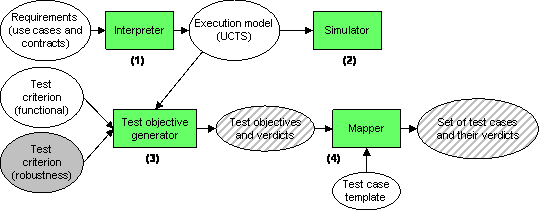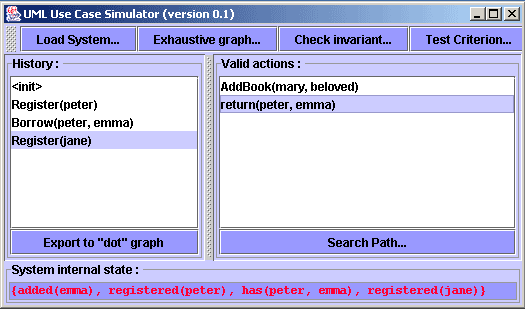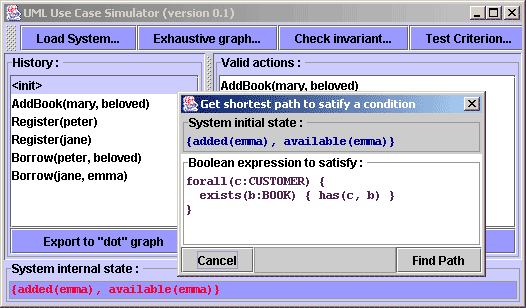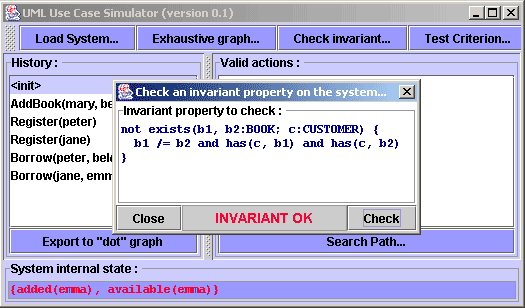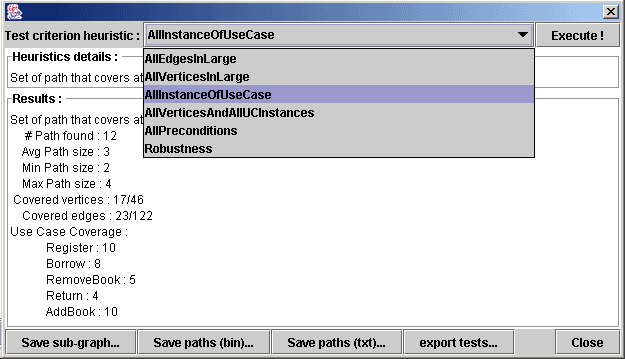# THE LIBRARY SYSTEM
# Entities of the system
{
beloved, emma : BOOK
peter, jane : CUSTOMER
mary : LIBRARIAN
}
# Description of the initial state
{
added(emma)
available(emma)
}
# Use cases description
#use case AddBook
UC AddBook(l:LIBRARIAN; b:BOOK)
pre not added(b)
post available(b) and added(b)
#use case RemoveBook
UC RemoveBook(l:LIBRARIAN; b:BOOK)
pre available(b)
post not available(b)
#use case Register
UC Register(c:CUSTOMER)
pre not registered(c)
post registered(c)
#use case Borrow
UC Borrow(c:CUSTOMER; b:BOOK)
pre registered(c) and available(b) and not exists(b2:BOOK) { has(c, b2) }
post not available(b) and has(c, b)
#use case Return
UC Return(c:CUSTOMER; b:BOOK)
pre has(c,b)
post available(b) and not has(c, b)
|
